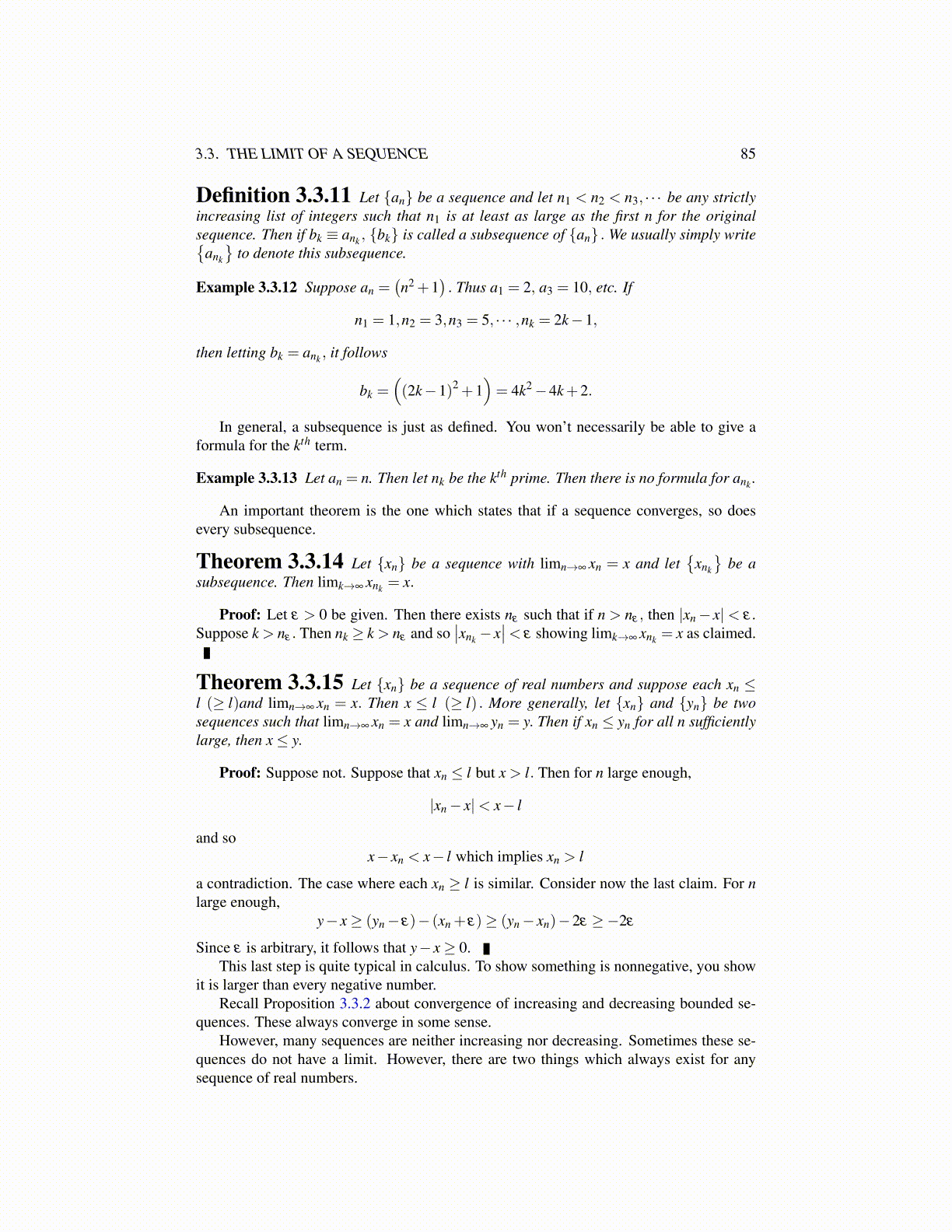
3.3. THE LIMIT OF A SEQUENCE 85
Definition 3.3.11 Let {an} be a sequence and let n1 < n2 < n3, · · · be any strictlyincreasing list of integers such that n1 is at least as large as the first n for the originalsequence. Then if bk ≡ ank , {bk} is called a subsequence of {an} . We usually simply write{
ank
}to denote this subsequence.
Example 3.3.12 Suppose an =(n2 +1
). Thus a1 = 2, a3 = 10, etc. If
n1 = 1,n2 = 3,n3 = 5, · · · ,nk = 2k−1,
then letting bk = ank , it follows
bk =((2k−1)2 +1
)= 4k2 −4k+2.
In general, a subsequence is just as defined. You won’t necessarily be able to give aformula for the kth term.
Example 3.3.13 Let an = n. Then let nk be the kth prime. Then there is no formula for ank .
An important theorem is the one which states that if a sequence converges, so doesevery subsequence.
Theorem 3.3.14 Let {xn} be a sequence with limn→∞ xn = x and let{
xnk
}be a
subsequence. Then limk→∞ xnk = x.
Proof: Let ε > 0 be given. Then there exists nε such that if n > nε , then |xn − x| < ε.Suppose k > nε . Then nk ≥ k > nε and so
∣∣xnk − x∣∣< ε showing limk→∞ xnk = x as claimed.
Theorem 3.3.15 Let {xn} be a sequence of real numbers and suppose each xn ≤l (≥ l)and limn→∞ xn = x. Then x ≤ l (≥ l) . More generally, let {xn} and {yn} be twosequences such that limn→∞ xn = x and limn→∞ yn = y. Then if xn ≤ yn for all n sufficientlylarge, then x ≤ y.
Proof: Suppose not. Suppose that xn ≤ l but x > l. Then for n large enough,
|xn − x|< x− l
and sox− xn < x− l which implies xn > l
a contradiction. The case where each xn ≥ l is similar. Consider now the last claim. For nlarge enough,
y− x ≥ (yn − ε)− (xn + ε)≥ (yn − xn)−2ε ≥−2ε
Since ε is arbitrary, it follows that y− x ≥ 0.This last step is quite typical in calculus. To show something is nonnegative, you show
it is larger than every negative number.Recall Proposition 3.3.2 about convergence of increasing and decreasing bounded se-
quences. These always converge in some sense.However, many sequences are neither increasing nor decreasing. Sometimes these se-
quences do not have a limit. However, there are two things which always exist for anysequence of real numbers.